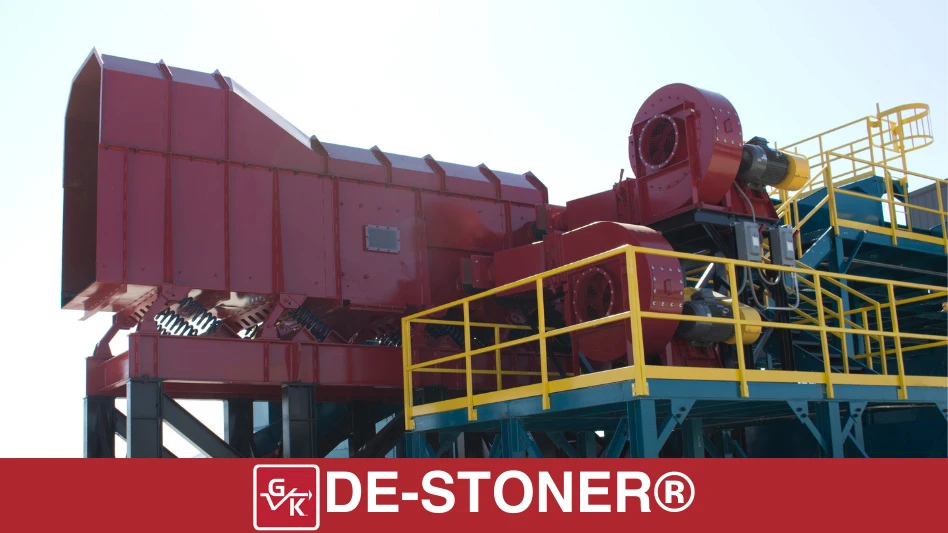
Armstrong World Industries, Lancaster, Pennsylvania, has participated in the circular economy for more than 17 years. Some say it is the new buzzword, combining the thinking from cradle to cradle, closed loop or extended producer responsibility; but it incorporates a very important change—the elimination of waste altogether.
Armstrong World Industries is committed to this opportunity by eliminating waste through our lean manufacturing processes in all of our 21 facilities around the world. We have not only redesigned our products, but also our processes to make less waste and be more efficient. This also makes good business sense.
Since its inception in 1999, the Armstrong Ceiling Recycling Program has recycled more than 173 million square feet of reclaimed commercial ceiling panels globally. This represents more than 86,500 tons that have been diverted from landfills since the program began.
Our ceiling recycling program enables commercial building owners and contractors to salvage ceiling panels removed during demolition and renovation projects and return them to the nearest Armstrong plant as an alternative to landfill disposal. Armstrong uses the reclaimed ceilings to make new ceiling panels in a closed-loop manufacturing process. The new panels are designated as Ceiling-2-Ceiling products.
By participating in the program, a demolition crew is able to place the salvaged ceiling panels on pallets or in containers. When the material is removed and ready for pickup, a recycling contractor transports them back to its facility where the ceiling panels are made ready for pickup by Armstrong.
The streamlined process enables a demolition crew to remove used ceilings from 12 of the 18 floors of a project in one week (saving time and money on labor), increases safety and helps maintain a clean job site.

Speedy removal of the old ceilings also allows the mechanical contractors open access to the plenum. They are able to identify which materials need to stay above the ceiling and which need to be removed without having to deal with the ceiling panels. It creates a more efficient and quicker demolition process.
One example of savings on one large demolition project in Chicago, the developer had sent 220,000 square feet of old ceiling panels back to Armstrong World Industries for recycling, diverting roughly 110 tons of construction waste away from the local landfill.
This process also saved up to 30 percent on container costs and landfill fees and contributed to Leadership in Energy and Environmental Design (LEED) credits for Construction Waste Management.
The Armstrong Recycling Program is a truly closed-loop process which reduces the use of virgin materials and also reduces the footprint of our products by using recycled streams. We also have set up a separate recycling center to handle customer information requests, registering projects, review and approval of buildings and materials, and setting up the logistics to return the ceilings.
It really starts with building owners to include the concept of recycling in their construction practices and to make it mandatory for all members of their construction team.
Our participation in the circular economy is a major commitment to our sustainability platform, the Armstrong GreenPrint. Our GreenPrint focuses on people, process and product. The end of life initiative touches on all three of these important areas.
Since 2008, we have been practicing life-cycle assessment methodologies, design for the environment practices to optimize our products by reducing their impacts, eliminating toxins and chemicals of concern and incorporating design for disassembly so the end of life for the product can participate in the circular economy we created.
Our industry’s mindset is currently in the take, make and dispose of model. Buildings account for 40 percent of the materials used and 30 percent of total waste. Most of these materials are recyclable, including steel, brick and wood. However, it is difficult to instill a change in habits or processes.
Challenges remain, including making the internal business case for it, updating antiquated public policies to promote circular strategies and educating our industry about the benefits. It really starts with the building owner to include the concept of recycling in their construction practices and to make it mandatory for all members of their construction team.
Ultimately, it’s about making a choice to do your part for the environment. We do have some pull with state and local ordinances that set a mandatory diversion rate on construction projects.
For example, California’s Green Building Standards Code (CALGreen) requires the diversion of at least 50 percent of the construction waste generated during most new construction projects. This is a great model with numerous tools on CalRecycle to aid in incorporating recycling into codes and implementing it in projects. This certainly has room to grow nationally, as well as has room for adoption locally.
Just imagine, a different state, where everyone is participating in the circular economy, and not producing waste or pollution. This would definitely lead to a brighter view, as well as being restorative and regenerative in both our processes and in the design of new products.

Explore the November 2016 Issue
Check out more from this issue and find your next story to read.
Latest from Construction & Demolition Recycling
- C&D World session preview: Key strategies for effective fleet maintenance
- Rotochopper hosts equipment owners at annual training program
- EAF mill underway in California
- On the move
- Viably teams with Turmec on materials processing systems
- Tight supply poised to keep recycled steel prices buoyant
- Untha shredder prepares SRF in the UK
- Mammoet on the job at Montréal Olympic Stadium project





